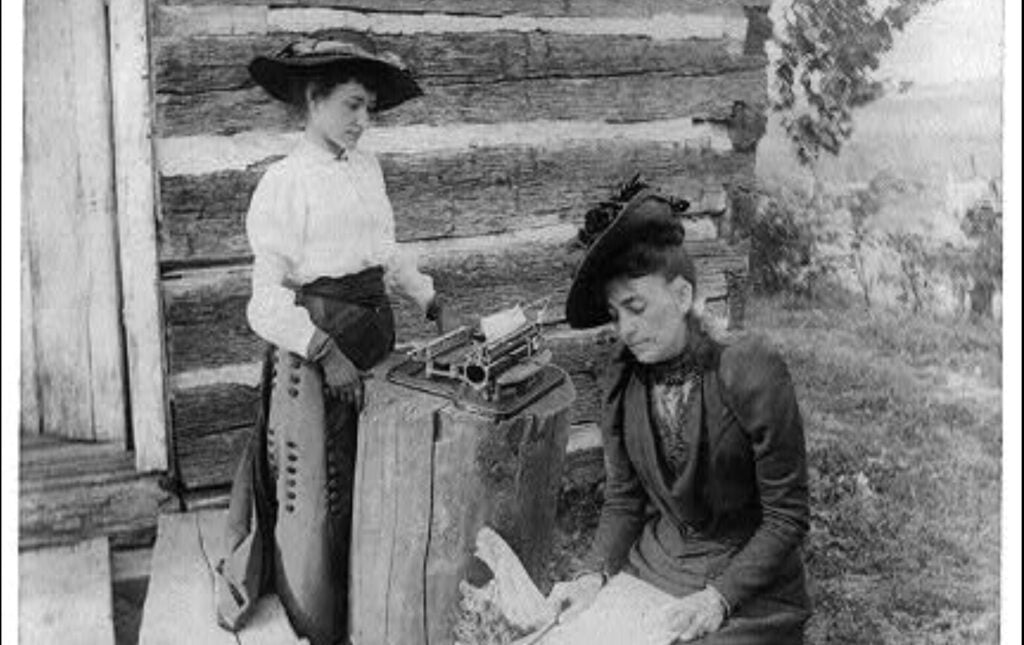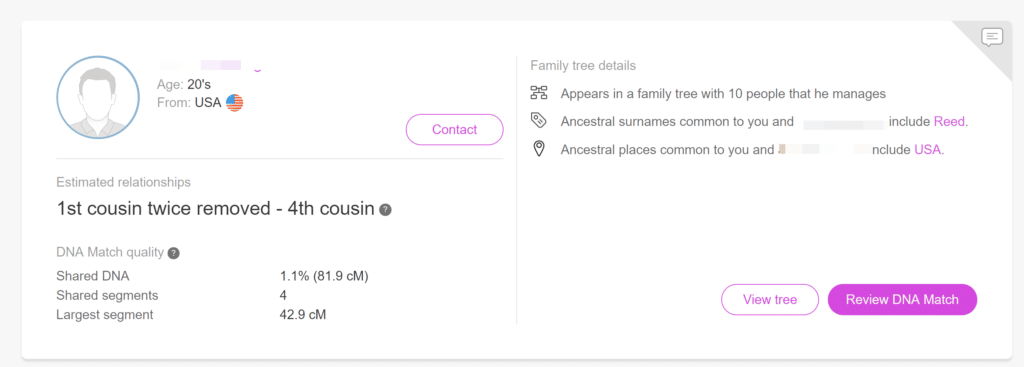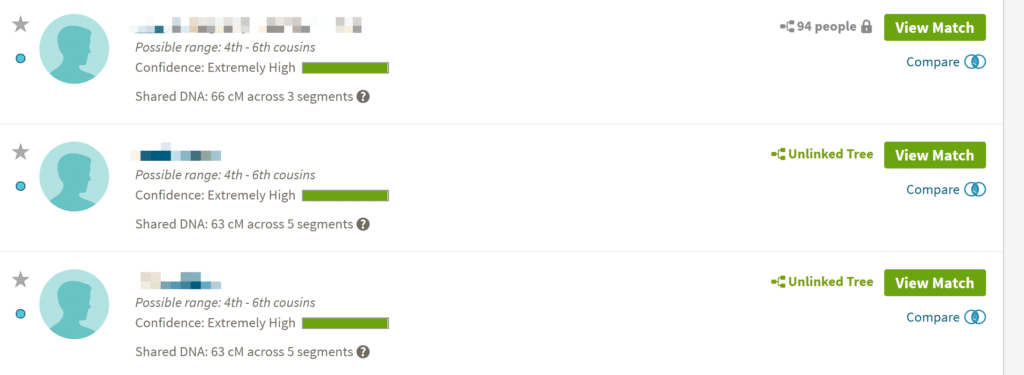Cousinship, or the relationship two cousins have to one another, is one of the most confusing concepts in genealogy and genetic genealogy. For those new to family history research, the task of deciphering these relationships can be downright daunting. What is a 5th cousin? How about a 3rd cousin once removed?
Numerous charts have been created to help family historians visualize this concept. In fact, Family History Daily has a chart of our very own. But we discovered, after creating this chart, that many people still found the calculations confusing. And this is totally understandable considering that even some professional genealogists still grapple with cousin relationships.
So, today, we want to share with you some very simple tricks for calculating what relationship you (or your ancestor or family member) share with another person. These tricks can be applied nearly every time and are easy to remember.
We’ll also show you how to use these tricks in reverse since so many DNA tests offer relationship estimates as part of your results.
If you like this article you may also enjoy taking an online genealogy course with Family History Daily. See how you can gain immediate access to all lessons here.
Why not just use a chart? Isn’t it more convenient?
As mentioned above, many people still find cousin relationships confusing even when a visual chart is available to them. And for those that do not – cousin charts can still be very limiting.
In the beginning, using a chart may seem like the most convenient way to calculate the relationship between two people but, the truth is, relying on a chart long-term can slow down your research and limit your ability to:
a) really understand why different relationship degrees are assigned (ie they are not just random designations)
b) make sense of relationships in any situation, even when a chart may not be available, or use that information in reverse or in complex situations
c) share what you have learned with others to help them also make sense of cousin relationships
For these reasons, we think it is well worth your time to make sense of the simple calculations required to figure out cousinship. Just think of the benefits it may have for your research.
How to Determine Cousin Relationships Without a Chart
Step 1. Determine the Most Recent Common Ancestor
To figure out what your (or your ancestor/family member’s) cousin relationship is to another person, start by identifying the most recent common ancestor of those two people. This is also known as the MRCA and is the most recent person that you and your cousin both descend from. This may be a grandparent, great grandparent, great great grandparent etc.
Let’s look at an example.
Emily wants to know exactly what relationship she shares with Clayton, a distant cousin she has recently connected with during her research. To figure this out, she must first determine what their most recent common ancestor is. Looking at her family tree and Clayton’s she sees that her 3rd great grandmother Anne is the sister of Clayton’s 3rd great grandfather Stewart.
This means that their shared ancestors are Anne and Stewart’s parents – Judy and Flem. Because Anne and Stewart are full siblings, their most recent common ancestor is both the mother and the father. For half siblings it would be the parent that both half siblings share.
Now we know that Emily and Clayton’s most recent common ancestors are Judy and Flem. Judy and Flem are Emily AND Clayton’s 4th great grandparents.
Step 2. Use One of Two Calculations to Find the Cousin Relationship
Now that we know the shared ancestors of our two target individuals, we can figure out exactly how they are related in terms of their cousinship.
There are two main ways that you can do this without a chart and they are both very simple and accurate. The most important thing is that you choose one that makes the most sense to you and stick with it so that you don’t get confused.
Trick 1: Add 1 to the number of greats
To figure out the cousin relationship from a shared great grandparent of a certain distance (ie 2nd great grandparent or 4th great grandparent) we simply ADD 1 and we have the base cousin relationship.
Using our previous scenario, since Judy and Flem are Emily and Clayton’s 4th great grandparents, the base relationship they have to each other is 5th cousin (4th greats plus 1).
If Clayton and Emily both shared a 5th great grandparent they would be 6th cousins, if they shared a 3rd great they would be 4th cousins and so on.
This +1 accounts for the parent and grandparent generations, while excluding the generation of the MRCA.
If you are dealing with shared grandparents, you simply also add 1. Since there are no greats you are adding 1 to 0 and you and get 1st cousins.
Trick 2: Count the number of generations IN BETWEEN the person of interest and the MRCA
Another way to find the cousin relationship is to simply count the generations between your target people (in this case Emily and Clayton) and their shared ancestor.
Here’s how.
- Child (Clayton or Emily, who are not counted)
- Parents – 1
- Grandparents – 2
- Great Grandparents – 3
- Great Great Grandparents – 4
- Great Great Great Grandparents – 5
- Great Great Great Great Grandparents (Judy and Flem, we don’t count them either)
We DON’T count either the target person or the most recent common ancestor.
This makes Emily and Clayton 5th cousins because there are 5 generations in between them and Judy and Flem.
You can see that we now have two simple ways to calculate cousin relationships without needing a chart. We simply ADD 1 to the number of greats when great grandparents are shared OR simply count the number of generations in between the target person(s) and the MRCA and use that number.
Generally, it is better to choose one of these strategies and use it often so that you do not get confused between the two.
Here is a quick breakdown of relationships by generation. Try to figure out why these relationships are what they are based on the tricks we have learned above.
- People who share parents are siblings
- Those who share grandparents are 1st cousins
- Those who share great grandparents are 2nd cousins
- People who share great great grandparents are 3rd cousins
- People who share great great great grandparents are 4th cousins
- Those who share great great great great grandparents are 5th cousins
- Those who share great great great great great grandparents are 6th cousins
- Those who share great great great great great great grandparents are 7th cousins
- People who share great great great great great great great grandparents are 8th cousins
Step 3: Apply the “Removed” Status
At this point you are probably wondering where removals fit into this neat calculation – such as 3rd cousin once removed or 5th cousin 3 times removed. This is really also quite simple.
Removals come in when two people don’t travel back the same number of generations to the most recent common ancestor.
Emily and Clayton are 5th cousins because they share 4th great grandparents (they both must travel the same number of generations back in time to reach this common ancestor) and this makes figuring out the relationship as straightforward as can be.
But if Emily has a daughter that changes.
Emily’s daughter, we’ll call her Maybelle, would also be Clayton’s cousin, but not in the same way that Emily is. She is one generation removed from the base cousin relationship her mother shares because she is one more generation distant from Judy and Flem.
When calculating removals we always start with the person who is closest to the most recent common ancestor. So, if we are trying to figure out how Emily’s daughter Maybelle and Clayton are related, we start by determining what generational distance Clayton has from the MRCA.
We already know that there are 5 generations in between him and Judy and Flem, making him and anyone else with that same generational distance 5th cousins (as Emily is). Her daughter is one generation further away, or removed, making her a 5th cousin once removed.
If Maybelle had a child, that child would be Clayton’s 5th cousin twice removed since that child would be two additional generations from Judy and Flem.
What if Clayton also had a child? Then that child and Maybelle would actually be 6th cousins, since they would be the same number of generations removed from the MRCA – just like Emily and Clayton are.
Let’s sum this all up.
To find a cousin relationship simply find the most recent common ancestor shared by both people, then count the number of generations between the person most closely related to that MRCA and the MRCA, then add a “removed” for every generation extra that the other person is from the MRCA. If none, don’t add a removal.
Let’s look at another example to illustrate how this works.
Mary is working on her tree and discovers that one of the grandchildren of her great great great grandparents was a celebrated war hero and she would like to know how she is related to that person (in terms of cousinship).
Her 3rd great grandparents’ names were Larry and Florence and they had 4 children – one was Mary’s ancestor and another was the father of this war hero.
To figure out how she is related to our hero, whose name is Fred, she needs to determine what the MRCA is for her and this man. Since we already know that he is the grandchild of her 3rd great grandparents, Larry and Florence, and they share no common ancestors in between, this is the MRCA.
Now she should choose who is more closely related to Larry and Florence to begin her calculation, and this is Fred.
Next, we need to determine how many generations exist between Fred and Larry/Florence. That is 1 generation (his Dad).
At this point, if Mary was also only separated by one generation from Larry/Florence they would be 1st cousins (using the strategy of counting the generations we learned above). But Mary is much more removed than that so we must start adding removals to the relationship.
Mary actually has 4 generations between her and Larry and Florence – her parents, grandparents, great grandparents and great great grandparents. This is three more than Fred.
That means that Mary and Fred are 1st cousins three times removed. You can check this solution against the cousinship chart from ISOGG here.
But what if Fred had a daughter? She would have two generations between her and Larry/Florence instead of 1 so we would start there. Then we would add in the two additional degrees of separation for Mary, and Mary and Fred’s daughter would be 2nd cousins twice removed.
Step 4: Use This Strategy in Reverse
With so many of us taking DNA tests, we are all quite familiar with screens like the ones below from MyHeritage and Ancestry that show us genetic cousins.
Understanding cousin relationships and how they are calculated can help us really make sense of what these numbers mean. Of course, the relationship suggestions from the DNA providers are only best guesses, but they can give us a close enough estimate to get us started.
While the process of determining genetic relationships can be very complicated, with the knowledge you have now learned about how they are calculated you can get an idea of where to start looking in your family tree for a shared ancestor.
For instance, if a match is an estimated 5th cousin you would need to look for common ancestors that are in the 4th great grandparent range or about 6 generations back in your tree (from you).
Here’s how it works:
- You
- 1 generation back = your parents
- 2 generations back = your grandparents
- 3 generations back = your great grandparents
- 4 generations back = your great great grandparents
- 5 generations back = your great great great grandparents
- 6 generations back = your great great great great grandparents and possible place to look for a common ancestor with your DNA match
The 5 generations in between you and the proposed MRCA relate to the cousin relationship you share (5th cousins). We just applied trick number two found above in reverse.
Since we know removals reflect a difference in generational distance from the MRCA between two cousins we can play around and consider several possible places to look in our tree for a common ancestor between us and a match. An estimate of 5th – 6th cousin may just as well be a 5th cousin once removed or a 4th cousin twice removed (etc) – both of these would be close enough to warrant a look.
If you combine this with other known information – such as shared surnames, location clues or additional genetic data, you have a good start in determining your connection to a genetic match.
As mentioned already, calculating actual relationships within genetics is a lot more complicated than this and there are people who specialize in this aspect of genetic genealogy for this reason.
In addition, the further back you get the less accurate these predictions – so be cautious.
But arming yourself with an understanding of how cousinship works will only aid you in your traditional and genetic genealogy research – now and in the future.
Happy hunting!
Working on improving your research skills? Don’t forget to check out Family History Daily’s online genealogy courses. Register now and get immediate access to 100+ online lessons.
By Melanie Mayo-Laakso, Family History Daily Editor
Image: “Picture of Mrs. Norah Gridley, cousin of Mrs. Abraham Lincoln, and Miss May Coleman, the typewriter, taken outside of and near the corner of the Lincoln Cabin, August 9/[18]91” Library of Congress.



This system is easy to apply. I like it.
Thank you so much Mary! Your Family History Daily information e-mails are priceless. I so appreciate the formula for determining who is who in the cousin relationships, and being able to print a copy for my binders. I’m 81 years young now, and need all the help I can get to prepare paperwork for temple ready candidates.
If I am Hazel’s 1st cousin once removed, what relationship is Hazel to me?
This is kind of what I do, but even counting the greats and adding 1 is more confusing than my way. Your “number” of cousin is how many Gs.
If your parents are your common ancestor, you have no Gs, so no cousin
If your Grandparents are the common ancestor, that’s 1 G, so first cousins
If your GreatGrandparents are the common ancestor, that 2 Gs so 2nd cousin.
I think counting the Gs is easier (and even “Less Math!” than counting the Greats and adding 1.
Just my take,
Mary